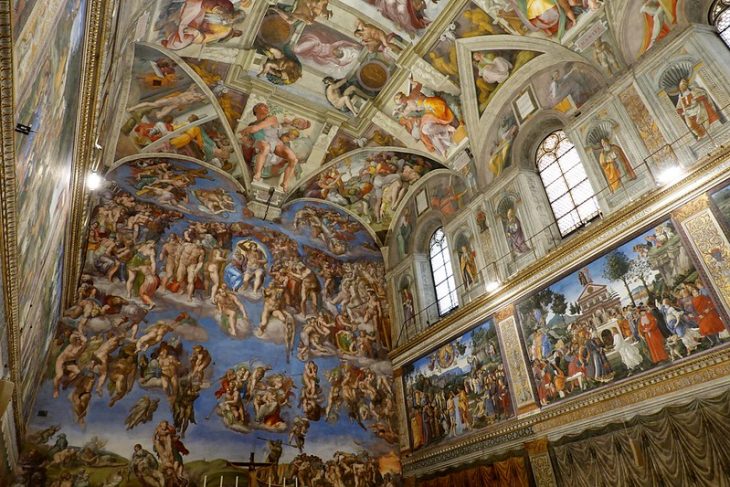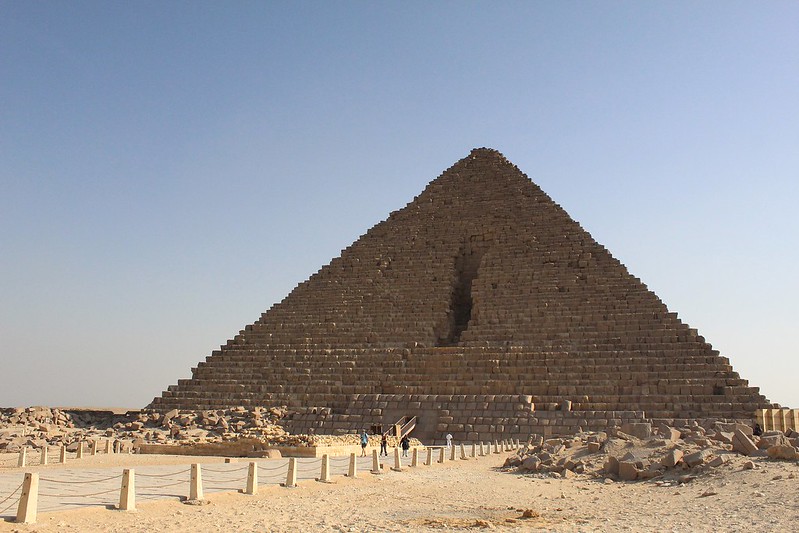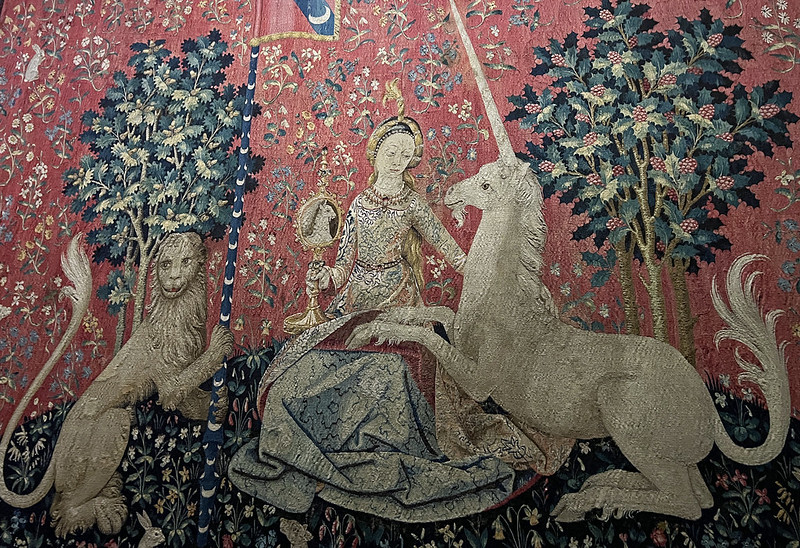
Art history is a captivating field that explores the evolution of human creativity throughout the ages. From ancient cave paintings to contemporary masterpieces, art history offers a window into the diverse cultures, ideas, and aesthetics that have shaped our world. In this comprehensive article, we will delve into the fascinating realm of art history, uncovering intriguing fun facts that will enhance your appreciation and understanding of this vibrant discipline. Get ready to embark on a journey through time and explore the wonders of art history!
The Oldest Known Artwork
The oldest known artwork dates back over 40,000 years and was discovered in the El Castillo cave in Cantabria, Spain. These Paleolithic cave paintings depict animals and handprints, providing valuable insights into the creative expressions of our ancient ancestors.
Ancient Egyptian Masterpieces
The art of ancient Egypt is renowned for its monumental sculptures, intricate hieroglyphs, and elaborate tomb paintings. The Great Sphinx, the pyramids of Giza, and the iconic bust of Queen Nefertiti are just a few examples of the enduring artistic legacy of this civilization.

The Legacy of Ancient Greece
Ancient Greece is renowned for its contributions to art history. The Greeks perfected the art of sculpture, creating lifelike representations of the human form. They also pioneered the use of perspective in painting and developed architectural styles that continue to influence us to this day.
The Renaissance Revolution
The Renaissance period, spanning from the 14th to the 17th century, witnessed a remarkable resurgence of art and culture. Influential artists such as Leonardo da Vinci, Michelangelo, and Raphael created masterpieces that continue to inspire and captivate audiences to this day.
The Mona Lisa Mystery
Leonardo da Vinci’s Mona Lisa is one of the most famous paintings in the world, known for its enigmatic smile. The painting’s subject, Lisa Gherardini, continues to captivate art enthusiasts, and the true identity behind her enigmatic smile remains a subject of speculation and intrigue.
Michelangelo’s Sistine Chapel
Michelangelo’s masterpiece, the Sistine Chapel ceiling, is a testament to the artist’s extraordinary talent and dedication. The frescoes depict biblical scenes and iconic figures, showcasing Michelangelo’s mastery of composition, anatomy, and perspective.
The Invention of Oil Painting
During the Renaissance, artists such as Jan van Eyck revolutionized painting by introducing the technique of oil painting. This new medium allowed for greater depth, detail, and richness of color, enabling artists to achieve a level of realism and luminosity previously unseen.
Impressionism and the “En Plein Air” Technique
Impressionism, a revolutionary art movement of the 19th century, introduced a new approach to capturing the fleeting effects of light and atmosphere. Artists like Claude Monet and Pierre-Auguste Renoir painted outdoors, directly observing and translating their impressions onto the canvas.
Cubism and the Fragmented Perspective
Pioneered by Pablo Picasso and Georges Braque, Cubism challenged traditional notions of representation by breaking down forms into geometric shapes and presenting multiple perspectives simultaneously. This innovative style paved the way for abstract and modern art.
Surrealism and the Unconscious Mind
Surrealism, championed by artists like Salvador Dalí and René Magritte, explored the realm of the subconscious and the power of dreams. Through fantastical and bizarre imagery, surrealists sought to unlock the hidden depths of human imagination.
Pop Art: Celebrating Popular Culture
Pop Art, popularized by artists like Andy Warhol and Roy Lichtenstein, celebrated everyday objects and popular culture. Through bold colors, repetition, and appropriation of mass-produced imagery, Pop Art challenged traditional notions of high and low art.
The First Art Gallery
The Uffizi Gallery in Florence, Italy, is considered the first art gallery in the world. It was established in 1581 and houses a vast collection of Renaissance masterpieces.
The Persistence of Van Gogh
Despite struggling with mental health issues and living in relative obscurity during his lifetime, Vincent van Gogh’s post-impressionist works now command immense admiration and are considered among the most valuable and influential in art history.
The Disputed Artist
The identity of the artist behind the iconic medieval artwork known as the Unicorn Tapestries remains a mystery. Scholars and art historians continue to debate the origin and creator of these captivating tapestries.

Hidden Paintings
X-ray technology and infrared imaging have revealed hidden layers and sketches beneath famous artworks. These discoveries provide valuable insights into the creative process and revisions made by artists.
The Art of War
During World War II, the Monuments, Fine Arts, and Archives program, known as the “Monuments Men,” worked to protect and recover cultural treasures stolen by the Nazis. Their efforts highlighted the importance of art in preserving cultural heritage.
Art Theft and Recovery
Throughout history, numerous art heists have taken place, resulting in the loss of invaluable artworks. However, thanks to the diligent efforts of law enforcement agencies and art investigators, many stolen masterpieces have been recovered and returned to their rightful owners.
Preserving Art and Cultural Heritage
Preservation and conservation efforts are crucial to safeguarding our artistic and cultural heritage for future generations. Museums, galleries, and cultural institutions around the world work diligently to protect and preserve artworks through proper storage, restoration techniques, and controlled exhibition environments.
Art enthusiasts and collectors also play a vital role in preserving art by ensuring its proper care, maintenance, and responsible acquisition. Supporting these efforts contributes to the longevity and accessibility of art for generations to come.
Conclusion
Art history offers a profound exploration of our collective human experience, revealing the power of visual expression throughout the ages. By delving into its fascinating narratives and appreciating the artistic achievements of past generations, we gain a deeper appreciation for the beauty, creativity, and diversity that define our world.
Frequently Asked Questions (FAQs)
What is the importance of studying art history?
Studying art history allows us to gain a deeper understanding of human creativity, cultural expression, and historical contexts. It helps us appreciate and analyze artworks, unravel their meanings, and connect them to broader social, political, and philosophical developments.
Are there specific periods or movements that are particularly significant in art history?
Art history encompasses a vast range of periods, styles, and movements, each with its own significance. However, some notable periods include the Renaissance, Baroque, Impressionism, Cubism, and Abstract Expressionism.
How can I learn more about art history?
There are numerous ways to explore art history, including visiting museums and galleries, taking courses or workshops, reading books and scholarly articles, and engaging with online resources and documentaries.
Can art history influence contemporary artistic practices?
Absolutely! Art history serves as a wellspring of inspiration for contemporary artists. Studying the techniques, concepts, and themes explored by past artists can inform and enrich the creative process of present-day practitioners.
Is art history limited to Western art?
While Western art has been extensively studied and documented, art history encompasses a global perspective. There are vibrant and rich artistic traditions from various cultures and civilizations worldwide that are integral to the field of art history.
Was this page helpful?
Our commitment to delivering trustworthy and engaging content is at the heart of what we do. Each fact on our site is contributed by real users like you, bringing a wealth of diverse insights and information. To ensure the highest standards of accuracy and reliability, our dedicated editors meticulously review each submission. This process guarantees that the facts we share are not only fascinating but also credible. Trust in our commitment to quality and authenticity as you explore and learn with us.
